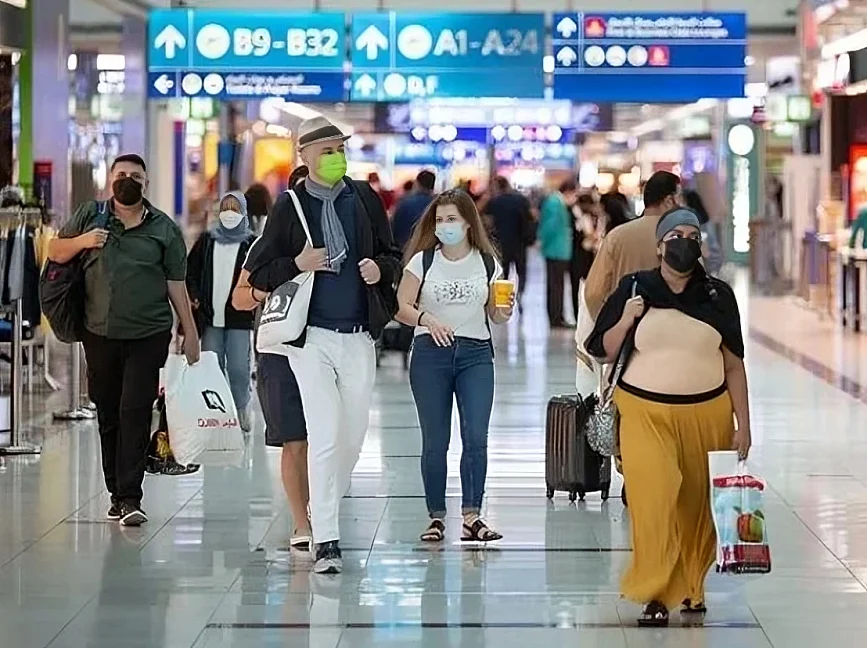Influenza spike in Dubai: Doctors warn of severe symptoms, link rise to travel
Kids, returning travellers most affected; intra-family flu transmission rate up

Dubai: As the UAE experiences dusty conditions and fluctuating temperatures, doctors in Dubai are reporting a noticeable uptick in influenza cases, especially among children and returning travellers.
Health experts say the current weather – a mix of heat, humidity, and suspended dust particles – may be compromising immunity and aggravating respiratory illnesses, including Influenza A.
‘Prominent’ uptick in cases
Dr Dharmendra Panchal, Specialist in Internal Medicine at Medeor Hospital Dubai, confirmed a rise in the number of cases.
“Yes, we are currently seeing an increase in cases of Influenza A. The uptick is comparatively more prominent than in earlier seasons, especially during this summer travel window,” Dr Panchal said.
Returning travellers driving spread
Dr Panchal said children and families returning from holidays are among the most affected.
“A considerable proportion of recent cases seem linked to families returning from international travel, particularly from regions where the southern hemisphere flu season is active – for example, parts of Southeast Asia and Australia.”
Dr Mohammed Hassan Kazia, Specialist in Internal Medicine at Prime Medical Center, Sheikh Zayed Road branch, Dubai, said: “The UAE being a major tourist and transit hub, travel is a factor in the spread of this condition.”
Children, elderly most at risk
According to doctors, the most affected groups in this wave include toddlers, school-age children, young adults, the elderly, and people with chronic medical conditions such as cardiac, pulmonary, renal, metabolic, neurodevelopmental, liver, or hematologic diseases. These groups are especially vulnerable when in close contact with returning travellers. Doctors are also seeing clusters of cases within households, indicating a high rate of intra-family transmission.
Indoor camps, household exposure
Dr Panchal noted that some cases are also being reported among children attending indoor summer camps or tuition classes, with transmission occurring to older adults and immunocompromised family members, including those with diabetes or metabolic syndrome.
This year’s flu more severe
This season, doctors are observing more severe symptoms compared to previous years.
“Influenza A this season is showing higher fever spikes lasting 3 to 5 days, more intense body aches, sore throat, and dry cough. We are also seeing increased gastrointestinal symptoms in children, such as nausea and vomiting, as well as severe fatigue and respiratory distress in high-risk groups,” said Dr Panchal.
“Recovery times are longer – around 7 to 10 days, with post-viral fatigue and cough lasting up to 2 to 3 weeks in some cases.”
Any new strains?
“Early data suggests circulation of Influenza A (H1N1) and H3N2 subtypes. Antigenic drift may be contributing to increased severity and reinfections in vaccinated individuals,” Dr Panchal explained.
However, Dr Kazia reassured that there’s no need for alarm.
“The new influenza vaccine is expected in September 2025 and should provide effective coverage against all the newer strains.”
Watch for complications in children
Dr Kazia noted that children with high fever and persistent cough, especially those with other co-morbidities, are occasionally being admitted for treatment. Complications in children can include febrile seizures in toddlers, worsening asthma or wheezing, secondary bacterial infections such as ear infections or pneumonia, and hospital admissions for dehydration or severe fatigue.
Early signs, red flags and preventive advice
Early signs: Sudden onset of high fever, persistent dry cough, sore throat and nasal congestion, severe fatigue, headache and fatigue.
Red flags: Fever lasting more than 3 days, difficulty breathing, chest pain or pressure, confusion or dizziness, signs of dehydration, severe or persistent vomiting or diarrhoea, altered mental status or seizures.
Preventive measures: Annual flu vaccination, frequent handwashing and mask use, avoid sending sick children to school; promote hydration, rest, and nutrition; ensure indoor ventilation; consider early antiviral therapy in high-risk patients.
Sign up for the Daily Briefing
Get the latest news and updates straight to your inbox
Network Links
GN StoreDownload our app
© Al Nisr Publishing LLC 2025. All rights reserved.